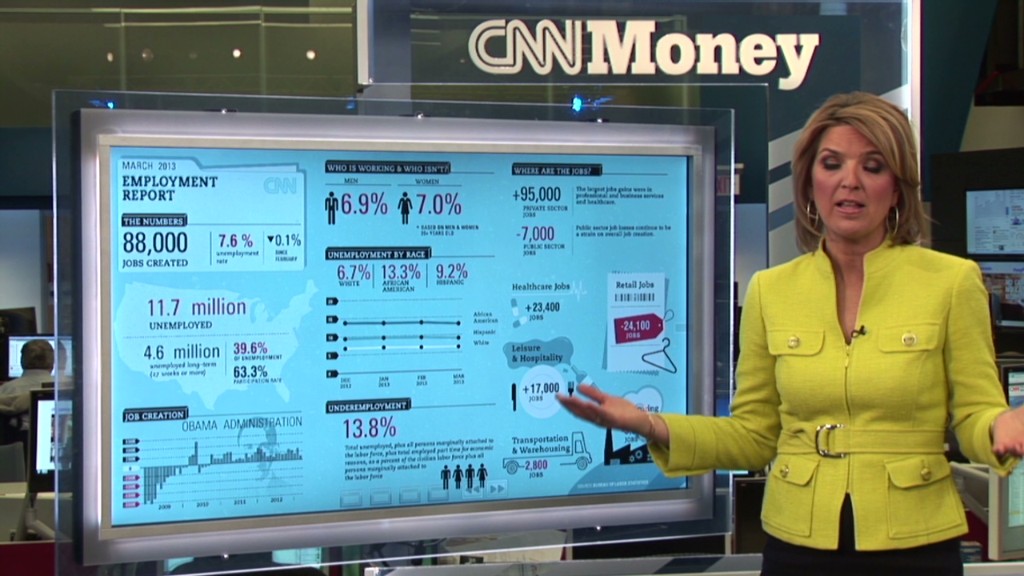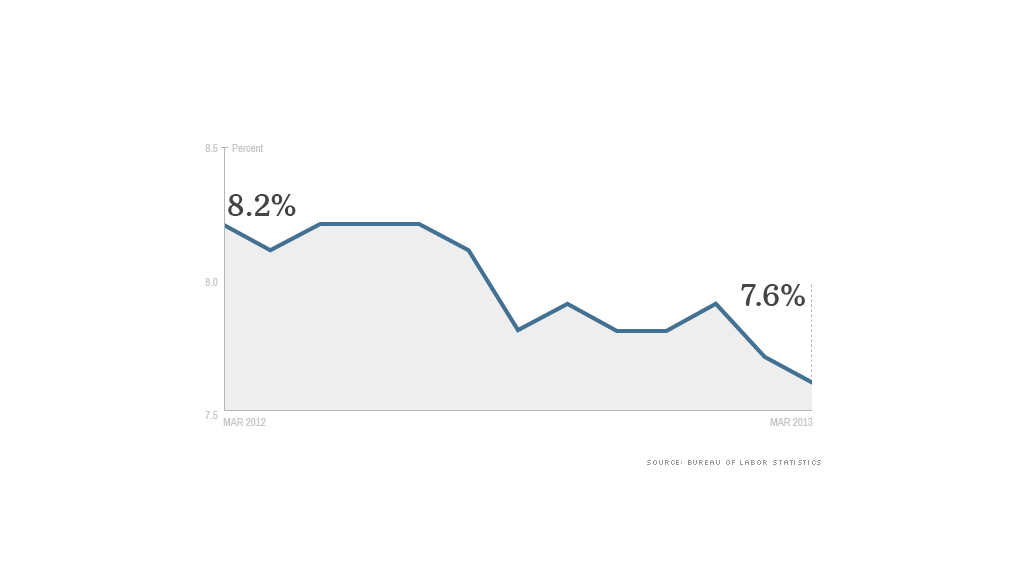What seemed like good news in Friday's jobs report was a little less than that -- the unemployment rate fell, but not because more people found work.
Instead, the rate was lower because the Labor Department estimated that there are nearly half a million fewer people in the labor force -- the group that includes people with a job or looking for one.
In the department's survey, 206,000 fewer people said they had a job than in the previous month, even though a separate survey of employers in the March jobs report showed 88,000 jobs were added.
In addition, 290,000 fewer people were counted as unemployed because they were not actively looking for work. That drop in those seeking jobs was the reason the unemployment rate fell to 7.6%, the lowest since December 2008.
The participation rate, which counts both those with jobs and those looking for work, fell to the lowest rate since 1979, when far fewer women were in the U.S. labor force. For men age 25 and older, March was the lowest participation on record.
Related: Workers over 50 are the "new unemployables"
Some of the downward trend in the participation rate in recent years is due to more baby boomers reaching retirement age, along with the longer life span of those who are retired. The greater the percentage of the population that is retired, the lower the participation rate.
Related: Am I too old to be hired?
The difficulty for younger workers finding jobs is also a factor, as more young adults unable to find work return to school to try to improve their prospects. The participation rate for those age 16 to 24 was near a 50-year low.
Related: Young adults drop out of the job market
But the downturn in March can't be blamed on demographic factors, according to Heidi Shierholz, a labor economist with the Economic Policy Institute, a liberal think tank. She points out that the participation rate of "prime-age" workers, age 25 to 54, also fell to match the lowest reading since 1984.

"It's the lack of job opportunities -- the lack of demand for workers -- that is keeping these workers from working or seeking work, not other factors," she said.
Shierholz said estimates from the nonpartisan Congressional Budget Office show there are 3.9 million workers who should be in the labor force but are not because of the weakness in the job market. Counting them as unemployed would take the unemployment rate up to 9.8%.
"The unemployment rate is currently hugely underestimating the amount of slack in the labor market," she said.



